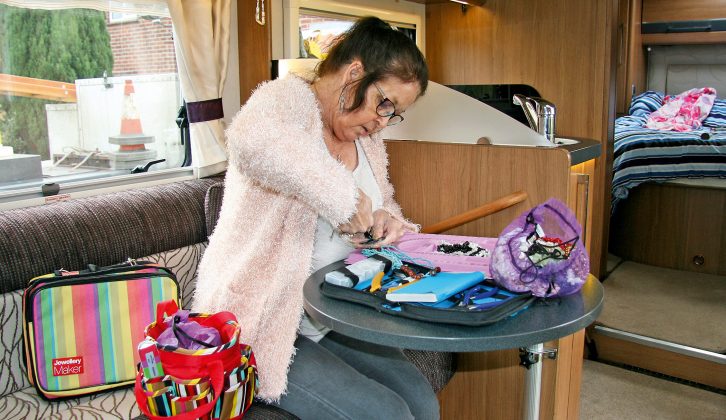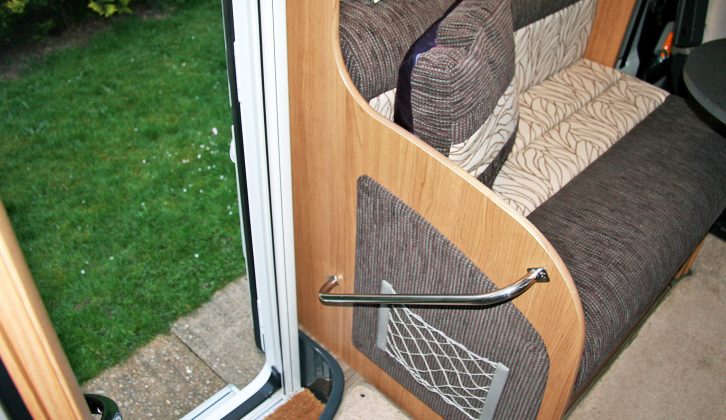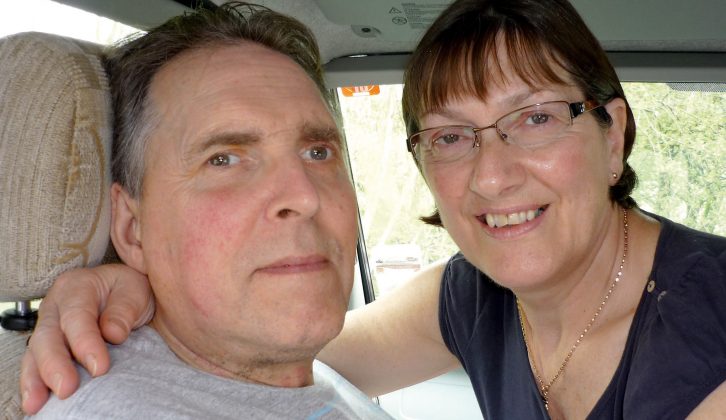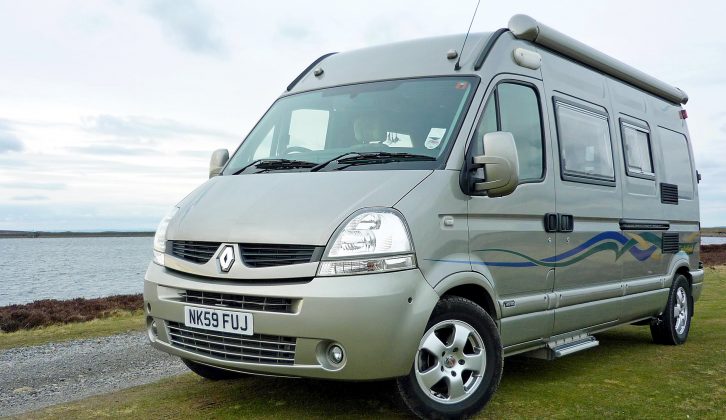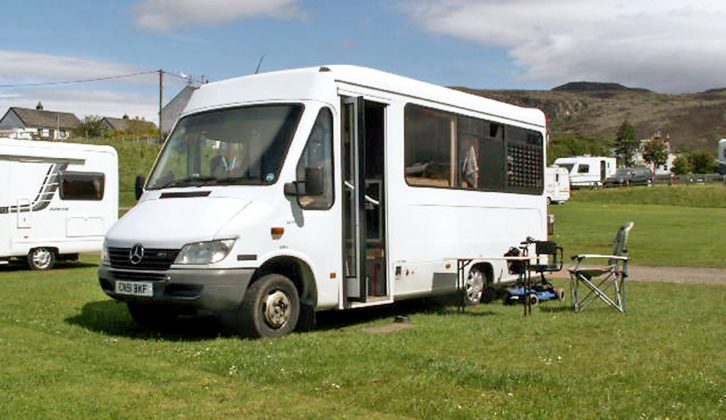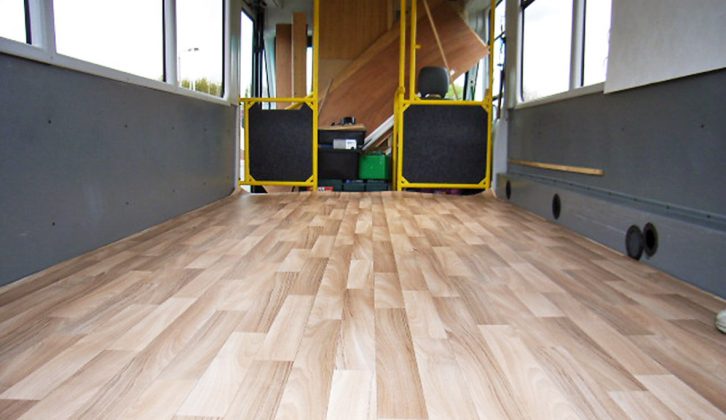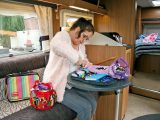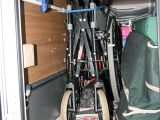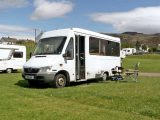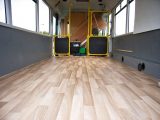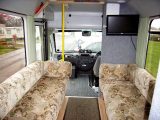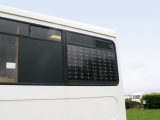If you buy the right motorhome, it can open up a world of travel and new experiences, whatever your state of health and mobility. Get it right and you really will have a comfortable home-from-home with you wherever you go. We went to meet the people who are really in the know to find out what motorhomes they use and how they’ve adapted them to suit specific requirements.
Chris and Christine Richards own an Auto-Trail Frontier Delaware
Based on a Fiat Ducato 2.2, 130bhp, the Frontier Delaware has the ideal layout for the couple.
Chris says, “We have been active motorhome owners for decades and, unfortunately, Christine has been disabled for more than 30 years. It has always been my aim to get her away from the four walls of the house but with the convenience of having all facilities with us.
“Christine’s back has got worse, but she still has enough mobility to allow her to enter and leave our ’vans on foot. Other health problems have arisen and rests are needed during the day.
“An Auto-Trail Frontier Delaware offered the ideal layout, as it features a large fixed island bed, a ‘garage’ for the wheelchair and a roomy lounge – essential for Christine – who enjoys craft work while we are away. It would be good for weekend breaks and longer tours.
“Simpson’s of Great Yarmouth, which fortunately was also one of our most local motorhome dealers, offered us the best part-exchange deal and we were lucky in that it had just taken delivery of three Delawares, one of which was the model we had chosen.
“We then sorted out the extras we would need. There were many: the most important were handrails at key locations and wheelchair clamps inside the ’van to secure the wheelchair if ever Christine is unable to transfer to a cab seat. We took delivery three weeks later and the handover was excellent.
“Since buying the ’van I have added a few extras, including more grab handles and assistance rails, LED lights in the under-bed storage area, an additional boom-arm table fitted near the longer sofa and a second leisure battery.
“The multijet turbo-diesel is a proven motorcaravan power unit and driving the 4250kg Delaware has always been a pleasure. Motorway driving is superb, especially if the cruise control is set. And it doesn’t suffer too much from buffeting from passing HGVs. The Super Lo-Line roof option allows plenty of light into the lounge.
“With both cab seats swivelled, the lounge is perfect for our needs and with the two boom arm tables in position, we each have an area where we can both spread out. Christine has enough space to do her craft work and I have room for reading. When dining we tend to use the boom-arm tables rather than the larger free-standing table as this increases the seating options.
“The kitchen is very well-equipped but the preparation space is quite limited, so I tend to swivel the adjacent boom-arm table towards the kitchen. This increases the worktop space, as does lowering the glass cover over the sink.
“Another big plus is the large fridge-freezer, which stores quite a few days’ perishable food and, when on hook-up, the fitted microwave comes into its own. So it’s easy – we can just tuck-in and enjoy!
“The shower and washroom are opposite each other. When we close the door across the aisle it makes an excellent en-suite. The bed is always available when Christine needs to rest during the day. It’s just like being at home and the mattress comfort is excellent.
“Inside, there’s loads of storage and the external stowage areas are good, too. At the rear, on either side, are the doors to the garage area. The gas locker has a remotely-operated internal latch. The offside is also home to a good-sized external locker just below the kitchen window, which is large enough to store the barbecue. Below the lounge window is a long locker where the hook-up point is and where the chocks are kept.
“The things we like best about our Delaware are the island bed, easy access to the shower and toilet, removable carpets, the panoramic skylight, spacious lounge and the large 190-litre fridge-freezer.
“We’re disappointed that there are no radio controls on the steering wheel and also we’d like there to be more worktop space in the kitchen.”
Isabel and Dave Scott own a Timberland Endeavour
Isabel says, “We have owned various models of Timberland motorhomes since buying an ex-demo in 2001. Our present ’van is a Timberland Endeavour, based on the Renault Master, which we’ve had for almost five years. To be more precise, it is a Renault Master 2.5TD Euro 4 120bhp, with a six-speed gearbox and front-wheel drive. It is 5.89m (19’4”) long, with a payload of 650kg. The price was £43,995 for the basic model, plus VAT.
“My husband, David, is wheelchair dependent so it is essential to have a ’van that is large enough to accommodate his needs but still an acceptable size to run as an everyday vehicle because we don’t own a car. This is where a panel-van conversion comes into its own, the main feature being the large sliding door.
“During the planning of the interior layout we asked for full clearance here to enable Dave to gain entry using telescopic removable ramps, measuring two metres when fully extended.
“Once aboard, there is ample floor space to park his ‘chair’ next to the swivelled passenger seat, so he can transfer, ready for travelling or for relaxation.
“At the time of buying, our son regularly travelled with us, so we were delighted when Timberland offered a variation in layout to accommodate two rear travel seats, with three-point seat belts. The seat layout can be varied to half or Pullman dinette or left as an inward-facing settee. The downside in having such flexibility is apparent when it is time to make the bed – it’s a jigsaw and a chore I do not enjoy!
“Because Dave’s Multiple Sclerocis (MS) has remained fairly static in recent years, our need to carry specialised equipment has stayed at a minimum. However, two pieces of kit are essential. One is a simple storage box built on castors, a brainchild of David’s from the earlier years of having MS. David sits on the box to manoeuvre himself up and down the ’van to reach the washroom. We prefer to use on-site facilities, but we also love wild camping and this box allows us to do that.
“The other vital piece of kit is a pump-operated pressure relief cushion, offering necessary skin protection when he is asleep.
“Heat exhaustion can be a problem in humid weather for MS sufferers. To make touring more comfortable for Dave, we specified both cab and roof air-con. In cold weather, the latter can also blow warm air, although the diesel heating is very effective. The air-con unit and cab radio have remote controls, giving Dave more independence.
“We chose a free-standing table as it is more versatile for someone with mobility problems. The kitchen is well-appointed with plenty of work space and storage.
“We’ve toured extensively with our Endeavour. It’s a good all-rounder and fits into most shopping centre parking bays.
“The adaptations we’ve found useful are having the sliding side door with no furniture or fittings to obstruct access, and also having the shower door hung on the right side of the compartment for easier transfer from the wheelchair onto the loo.
“Essential equipment we keep on board includes removable telescopic ramps, clamps to stop the wheelchair moving about in transit, our own wheeled box-cum-stool and a pressure relief cushion and pump.
“On top of that we have a remote controlled radio, a multi-stack CD player, remote controlled roof air-con unit, a reversing camera, a bike rack for two bikes and four mudflaps.
“The things that we like best about the Endeavour are the roof air-con, versatile seating, the kitchen layout and the fact that it’s good to drive.
“The things we dislike about the Endeavour are the dated dashboard and the fact that bed-making is a bit complicated.”
Mark Smith’s a Master motorhome-maker
Mark built himself a fantastic motorcaravan… from his wheelchair!
Mark says, “A progressive disability and a love of motorcaravanning led me on a search for a vehicle with wheelchair access that I could convert into a motorhome. I already owned a two-berth coachbuilt but was having difficulty getting in and out of it. My budget wouldn’t allow me to consider a vehicle that was already adapted, so a self-build was my only option if I was to carry on camping.
“I used the internet and classifieds to search for a suitable vehicle. I wanted to be able to use the wheelchair inside, so sufficient interior space was a priority, although I also didn’t want a vehicle so big that it would become difficult to park.
“After due consideration I bought a 2001 Mercedes Sprinter-based ex-welfare bus with double back doors for easy access and an underslung cassette wheelchair lift. It came with a few useful extras such as diesel heating and a reversing camera. Both proved useful in its new role as a home on wheels. As it was a bus, it has windows down both sides which would be a disadvantage to some people. From a wheelchair user’s point of view, I would much rather panel over or vinyl over windows than to try fitting new ones myself. When you start involving the trades, you can expect the build costs to sky rocket.
“To keep the conversion work to a minimum I bought a second-hand caravan to source most of the furniture and all of the appliances from. Behind the driver’s seat and passenger door are two six-foot sofas for sitting and sleeping on. The toilet compartment and wardrobe are towards the rear of the ’van on the driver’s side, with the kitchen opposite.
“The things I like most about my motorhome are the underslung cassette wheelchair lift, the diesel heating and the reversing camera.
“One thing I’m less keen on is the fact that I left windows along both sides.”
With a few modifications motorhome touring is open to everyone – and you can read more in our Practical Motorhome touring with disabilities blog.
Since buying the ’van I have added more grab handles and assistance rails

